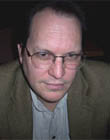|
|
This topic comprises 3 pages: 1 2 3
|
|
Author
|
Topic: Sound Advice
|
|
|
Louis Bornwasser
Film God

Posts: 4441
From: prospect ky usa
Registered: Mar 2005
|
 posted 03-05-2012 08:49 PM
posted 03-05-2012 08:49 PM





There are no new "rules" in audio, so old school, if adequate, will still be good. Certainly JBL had its share of dogs (need model number). Yamaha to me is questionable.
Is Dolby Digital a requirement? If so, use cp650, if not, perhaps an Ultra is enough.
As a general rule, the speakers in front of the screen is good for stage and behind the screen for film. That is why few, if any, systems are interconnected.
I would encourage a gentle upgrade of film and a seperate system for live. That way the "know-it-all" can win, too.
(btw: the film system will always sound more full, and more powerful.) Louis
| IP: Logged
|
|
|
|
|
|
|
|
David Buckley
Jedi Master Film Handler
Posts: 525
From: Oxford, N. Canterbury, New Zealand
Registered: Aug 2004
|
 posted 03-07-2012 03:13 AM
posted 03-07-2012 03:13 AM





If "small QSC speakers" will do the job of the live usage, then either the venue is quite small, or the live needs are quite limited, or both.
All things being equal, separate systems is the recommended approach. If nothing else, it prevents the attitudinal conflicts that can arise between movie sound people and live sound people, as demonstrated above. The two worlds have different requirements and value different priorities, and there are even some valid reasons why the approaches taken with cinema and live sound reinforcement are different.
Of course, if you need one system to deliver digital movie audio, live theatre and musicals, Metallica and dubstep (all at their intended volume, scope and scale), and to sound good with all these types of programme material, then you have a different set of problems to solve, and small box of any type wont be the answer ![[Razz]](tongue.gif)
| IP: Logged
|
|
Scott Norwood
Film God

Posts: 8146
From: Boston, MA. USA (1774.21 miles northeast of Dallas)
Registered: Jun 99
|
 posted 03-07-2012 08:16 AM
posted 03-07-2012 08:16 AM





I'm not a sound expert, but I know what sounds good. The limiting factor with this type of venue is often the room, from what I have seen (heard). Large, old theatres can usually be made to sound good for live music and performances or film reproduction, but usually not both. A "live" (reverberant) room is preferred for live music, while a "dead" room is preferred for film. Rooms that were designed and built before the advent of talking pictures seem to be especially live.
I don't have a solution, but I can point to at least one example of a building where the overall sound quality was better with a single A4 behind the screen than with a full-blown modern sound system (installed for a rental and then removed). One change that did make a difference with the multichannel ssytem was increasing the center channel gain by 2-3 dB over the left and right stage channels. Dolby might not approve, but it worked.
As an audience member, the most important issue is dialogue intelligibility. The second most important issue for me is having the sound come from behind the screen, rather than from above it or from the sides. Get these right and everything else should be fine. Get them wrong and nothing else matters.
I agree with the comments that live sound people do not understand film sound (for the most part), although they do have some interesting tools now that might be useful for improving sound in problematic venues (in particular, DSP-based room correction and time alignment systems).
| IP: Logged
|
|
|
|
|
|
|
|
|
|
|
|
Chuck McGregor
Film Handler
Posts: 47
From: Bremen, ME, USA
Registered: Mar 2012
|
 posted 06-11-2012 04:56 AM
posted 06-11-2012 04:56 AM




quote:
Louis Bornwasser said: Besides, proper film systems are always of higher quality; The difference between: voices and A-bomb blasts.
Sorry to jump in late on this...
Louis, with all due respect, this statement is not true by any stretch. "Proper" PA systems can easily match "proper" film systems. They both have to deal with the same 20 Hz to 20 kHz spectrum and dynamics. Reproducing dialog, "A-bomb blasts," or violins knows no favorites in terms of doing it with high quality.
In fact, I would bet the best PA technology (loudspeakers) I know of against the best cinema technology. The ultimate criterion for loudspeaker sound quality is transparency = lack of coloration = pristine transient response. This can be measured and is done so with the best PA equipment. I've never seen such data for cinema systems (except for the one I've been working with.) And no, the bode plots, impulse responses, waterfall plots, ETC's et al from typical commercial measurement systems don't have the adequate time and frequency resolutions to do this. RTA measurements are even further down the list.
I didn't detail this in my Yak "Who the Heck..." profile, but part of my career was some dozen years being in charge of the acoustic measurement labs, measurement data processing, and generating the product specifications for both Community Professional Loudspeakers and Eastern Acoustic Works (EAW). As such, I do have a little bit of knowledge about loudspeaker sound quality and measurements of same.
As to the primary question in this thread, a well-qualified audio consultant and separate PA and cinema systems are the right pieces of advice. Quality usually has a price. Filet mingnon costs more than a shank cut ![[Big Grin]](biggrin.gif)
| IP: Logged
|
|
|
|
|
|
|
|
All times are Central (GMT -6:00)
|
This topic comprises 3 pages: 1 2 3
|
Powered by Infopop Corporation
UBB.classicTM
6.3.1.2
The Film-Tech Forums are designed for various members related to the cinema industry to express their opinions, viewpoints and testimonials on various products, services and events based upon speculation, personal knowledge and factual information through use, therefore all views represented here allow no liability upon the publishers of this web site and the owners of said views assume no liability for any ill will resulting from these postings. The posts made here are for educational as well as entertainment purposes and as such anyone viewing this portion of the website must accept these views as statements of the author of that opinion
and agrees to release the authors from any and all liability.
|

 Home
Home
 Products
Products
 Store
Store
 Forum
Forum
 Warehouse
Warehouse
 Contact Us
Contact Us




 Printer-friendly view of this topic
Printer-friendly view of this topic







![[Razz]](tongue.gif)



![[Big Grin]](biggrin.gif)
![[thumbsup]](graemlins/thumbsup.gif)



